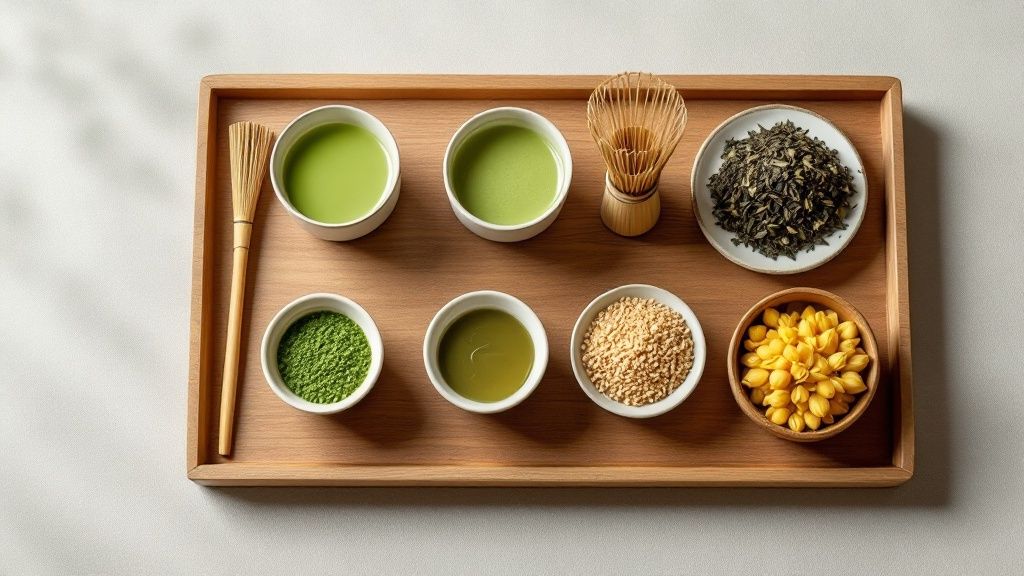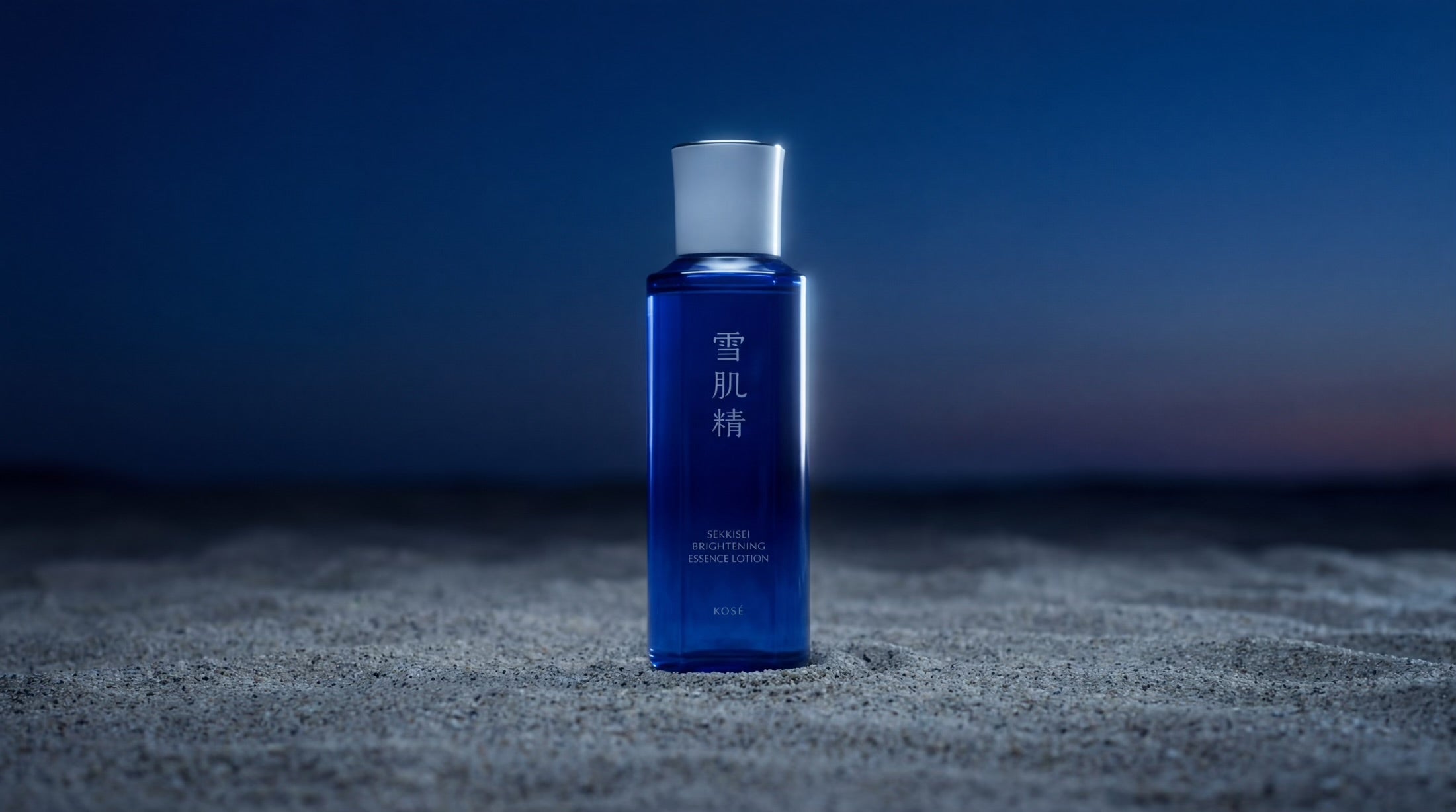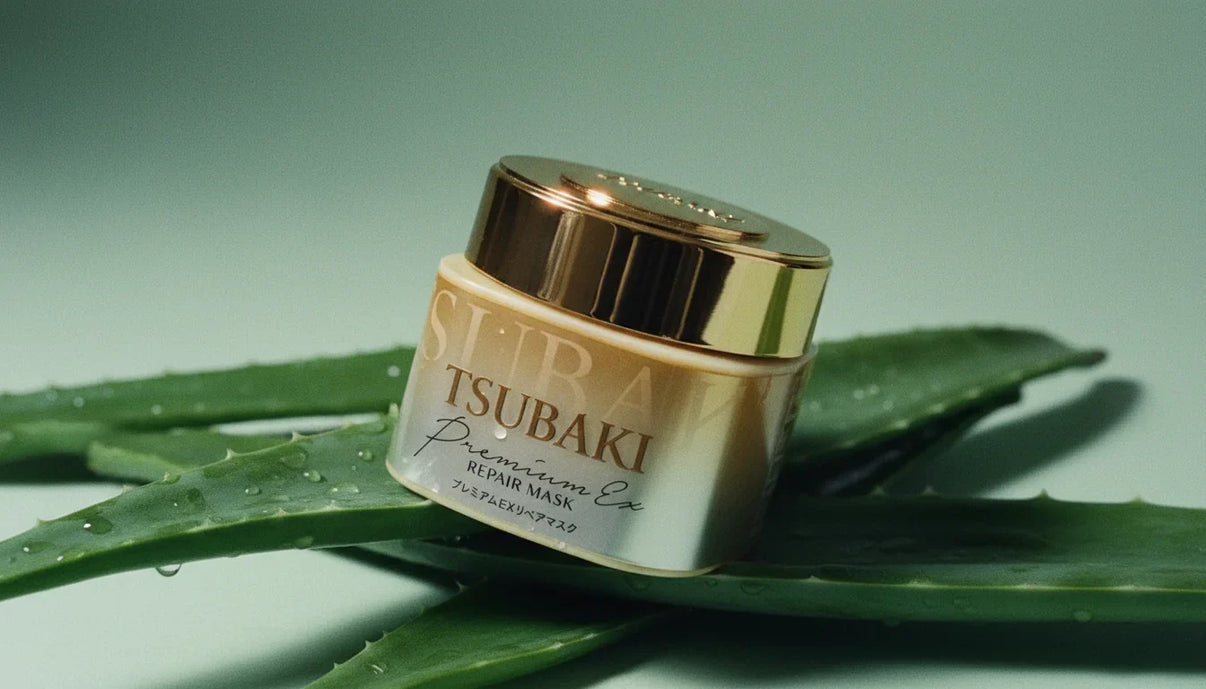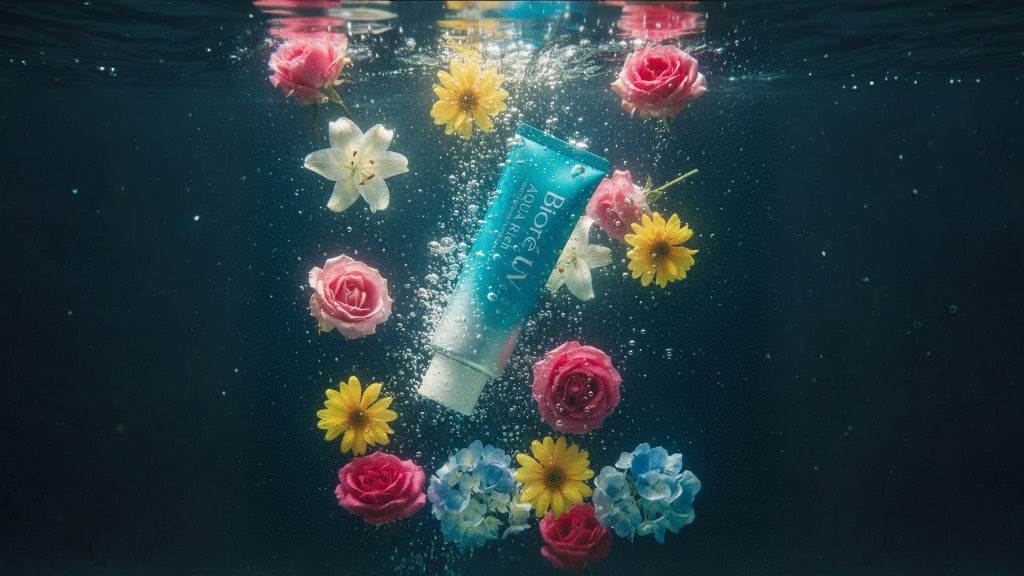Ready to dive into the rich and nuanced world of Japanese tea? You’ve come to the right place. This is your perfect starting point for discovering the incredible variety Japan has to offer, and we're proud to offer many of these selections on our site. The key differences between the many types of Japanese tea—from bright, grassy Sencha to deep, umami-rich Gyokuro—all come down to cultivation, harvest time, and unique processing methods like steaming. This guide will help you find the perfect brew for any occasion.
A World in a Teacup
Exploring the different types of Japanese tea is like taking a journey through Japan's culture and seasons. All true teas, from the most delicate green to the darkest black, start life as a single plant: Camellia sinensis. The incredible spectrum of flavors, aromas, and colors you find in your cup isn't due to different plants, but rather the artistry and tradition applied after the leaves are picked.
Think of it like grapes for wine. The same grape variety can produce wildly different wines depending on the soil, climate, and the winemaker's touch. In the same way, Japanese tea masters use specific, time-honored methods to craft truly distinct experiences in every cup.
These methods determine everything about the final product:
- Cultivation: Are the tea plants grown in full, bright sun or carefully shaded to develop deeper flavors?
- Harvest Time: The season and specific harvest (first, second, or later) dramatically changes the tea's character and taste.
- Processing: This is where the magic happens. The signature Japanese step of steaming stops oxidation right in its tracks, locking in those fresh, vegetal notes.
The most defining characteristic of Japanese green tea is the steaming process used to halt oxidation. This one step preserves the leaf's vibrant green color and creates the fresh, grassy flavor profile that sets it apart from pan-fired Chinese green teas.
Before we get into the specifics of each tea, here's a quick look at some of the most popular varieties you'll encounter in our collection. Think of this as your cheat sheet to the world of Japanese tea.
Quick Guide to Popular Japanese Teas
| Tea Type | Flavor Profile | Best Brewing Temperature |
|---|---|---|
| Sencha | Grassy, slightly sweet, refreshing with mild astringency | 70-80°C (158-176°F) |
| Gyokuro | Rich umami, sweet, mellow, with a seaweed-like note | 50-60°C (122-140°F) |
| Matcha | Creamy, rich umami, smooth, with a slightly sweet finish | 70-80°C (158-176°F) |
| Hojicha | Toasty, nutty, and warming with low caffeine | 90-100°C (194-212°F) |
| Genmaicha | Savory, nutty (from roasted rice), with a vegetal base | 80-85°C (176-185°F) |
| Bancha | Robust, earthy, and more astringent than Sencha | 80-90°C (176-194°F) |
This table gives you a great starting point, but the real fun is in exploring the subtle differences for yourself.
Understanding the Flavor Spectrum
This guide will introduce you to the foundational teas that form the heart of Japanese tea culture. We'll explore everyday favorites like Sencha, ceremonial grades like Matcha, and unique roasted varieties like Hojicha, all available on our website. From the crispness of a daily Sencha to the profound depth of a ceremonial Matcha, you'll soon understand what makes each type special and appreciate the craftsmanship behind every single cup.
The Foundation of Japanese Green Teas
What really separates the incredible variety of Japanese teas from all others around the world? After all, it all comes from the same plant. The secret, and the true cornerstone of Japanese green tea, lies in one critical step done right after the leaves are picked: steaming.
Think of it like blanching spinach to lock in that vibrant green color. The second tea leaves are harvested, they start to oxidize—a natural process that would eventually turn them into black tea. By quickly steaming them with hot water vapor, Japanese tea artisans halt this reaction dead in its tracks. This preserves the leaves' brilliant green hue and their signature fresh, grassy, and sometimes oceanic flavors.

The Impact of Steaming Time
Now, not all steaming is created equal. The length of this crucial step has a massive impact on the finished tea, changing everything from its flavor to how it looks in your cup. This is what creates such a wonderful spectrum of tastes, even within a single tea type like Sencha.
You'll generally find three main levels of steaming:
- Asamushi (Light Steamed): This is a very brief steam, lasting only 20-30 seconds. The gentle process keeps the leaf’s original needle shape intact, brewing a clear, pale yellow-green tea with a light, refreshing, and aromatic flavor.
- Chuumushi (Medium Steamed): The most common method, clocking in at around 30-90 seconds. This creates a fantastic balance between the delicate taste of Asamushi and the richer body of Fukamushi.
- Fukamushi (Deep Steamed): Here, the leaves are steamed for a longer period of 90-120 seconds. This breaks down the leaf structure, creating smaller, finer particles. The resulting brew is a deep, cloudy green with a full-bodied, sweeter taste and much less bitterness.
This obsession with preventing oxidation is what makes Japanese tea production so distinctive. In fact, green tea makes up a staggering 99% of all tea produced in Japan, which shows you just how central this method is to the culture. The styles are then sorted by their specific steaming and cultivation methods, giving us the main grades of ryokucha (Japanese green tea): Gyokuro, Kabusecha, Sencha, and Bancha.
The Art of Shading Tea Plants
Beyond steaming, there's another technique that completely transforms a tea’s personality: shading. For the most luxurious teas like Gyokuro and Matcha, which are staples in our collection, farmers will cover the tea bushes with special cloths for about three weeks before the harvest.
Shading the tea plants from sunlight forces them to produce more chlorophyll and L-theanine. This is the secret behind the deep emerald color, reduced bitterness, and powerful umami flavor found in Japan’s most celebrated teas.
By blocking sunlight, the plant goes into overdrive producing L-theanine, an amino acid that gives the tea those sought-after savory, umami notes while also promoting a feeling of calm focus. The tea becomes sweeter, mellower, and far more complex. Shading is a true art form, demonstrating the meticulous care that turns a simple leaf into an exquisite experience.
If you're curious to learn more about the different types of Japanese tea and find one that's perfect for you, check out our broader overview of Japanese tea types.
Exploring the Sunlight Teas: Sencha and Bancha
If you were to imagine the taste of early spring captured in a cup, you'd be thinking of Sencha. If there's one single tea that defines Japanese green tea, this is it. The tea plants are grown in full, direct sunlight, which helps the leaves develop a vibrant, energetic character that comes through beautifully in the final brew. For anyone just starting their journey into Japanese tea, our Sencha selections are the perfect place to begin.
Its flavor is wonderfully refreshing and easy to love. You’ll often pick up notes of fresh-cut grass, maybe some steamed spring vegetables, and even a clean hint of the sea. All of this is balanced by a gentle sweetness and a pleasant, crisp finish that leaves you feeling revived. This beautiful balance makes it an incredibly versatile tea, perfect for sipping any time of day.

Sencha isn't just popular—it's the very foundation of Japan's tea culture. It is by far the most widely produced and consumed green tea in the country, making up about 80% of all tea grown in Japan. Made from the young leaves picked during the first harvest of the year, its cultural importance makes it the ideal gateway to understanding all the different types of Japanese tea.
The Special Case of Shincha
Within the world of Sencha, there's a highly prized, seasonal treasure known as Shincha. The name translates to "new tea," and it's made from the very first, most tender shoots of the year's first harvest. It’s famous for its incredible freshness, low bitterness, and a remarkably sweet, vibrant flavor.
Because it’s only available for a short window each spring, Shincha is eagerly anticipated by tea lovers everywhere. Drinking it is a way of celebrating the arrival of a new season.
Meet Bancha: The Humble Everyday Brew
After the prime leaves for Sencha are harvested, the tea plants don't stop growing. The leaves that are picked later in the season—from the second, third, or even fourth harvest—are used to create Bancha. This is the comforting, reliable staple you’d find in just about any home across Japan, and we're proud to offer it for your daily enjoyment.
Because the leaves are older and more mature, Bancha has a completely different personality than Sencha. Its flavor is much more robust and earthy, with toasted, woody notes and a noticeably stronger astringency. It’s a hearty and satisfying brew that holds its own when paired with food.
Bancha is often considered the "everyday" tea due to its affordability and lower caffeine content. Its robust flavor and comforting nature make it an excellent choice for an after-meal drink or a simple, warming cup at any time of day.
Brewing and Pairing Your Sunlight Teas
To get the absolute best out of these teas, paying close attention to your water temperature is the secret. If you rush the process with boiling water, you risk scorching the delicate leaves, which will result in a bitter, unpleasant cup.
Here are a few tips to get you started on the right foot:
- For Sencha: You’ll want to use water that’s around 70-80°C (158-176°F). This gentler temperature helps draw out the sweetness and umami without releasing too much of the bitterness. A steeping time of about 60 seconds is perfect for your first cup.
- For Bancha: This tea is a bit more forgiving. You can use slightly hotter water, somewhere around 80-90°C (176-194°F). Steep it for 1-2 minutes to really pull out its full-bodied, earthy character.
When it comes to food, Sencha’s fresh, grassy profile is a fantastic match for seafood, salads, and light rice dishes. On the other hand, Bancha’s stronger, more rustic flavor pairs wonderfully with fried foods, pickles, and hearty meals. If you really want to nail the process, check out our detailed guide on Sencha brewing instructions for the perfect green tea every time.
The Art of Shade-Grown Teas: Gyokuro and Kabusecha
While sun-drenched teas like Sencha perfectly capture the bright, energetic spirit of spring, there's another class of Japanese tea that offers a completely different, almost profound experience. These are the luxurious shade-grown teas, meticulously cultivated to produce flavors that are deep, complex, and intensely savory. It’s a practice that truly represents the pinnacle of Japanese tea craftsmanship.
By intentionally shielding tea plants from direct sunlight for weeks before the harvest, farmers trigger a fascinating change within the leaves. This forces the plant to ramp up chlorophyll production, resulting in a stunningly deep, emerald-green leaf. More importantly, it supercharges the levels of L-theanine, the amino acid responsible for that rich, brothy umami flavor these teas are so famous for.

This careful cultivation is what creates a sensory experience unlike any other. The final brew is often thick, almost viscous, with a lingering sweetness that just coats your palate.
Gyokuro: The Coveted "Jade Dew"
At the very top of the shade-grown world sits Gyokuro, a name that translates beautifully to "jade dew." This is a truly special tea, shaded for a significant period—typically around three weeks—before the first harvest of the year. This extended time in the shade maximizes that signature umami and sweetness while dialing back any hint of bitterness.
The flavor of Gyokuro is an experience you won't forget. It's intensely savory, with a pronounced seaweed-like note and a thick, brothy texture that feels both satisfying and complex. For many tea connoisseurs, Gyokuro is the ultimate expression of Japanese green tea, a luxurious brew perfect for moments of quiet contemplation. You can find premium Gyokuro in our store.
Kabusecha: The Perfect Balance
If you're looking for a delightful bridge between the sun-grown and shade-grown worlds, you'll find it in Kabusecha, or "covered tea." The shading period for Kabusecha is shorter, generally lasting about 7 to 10 days. This shorter duration creates a beautiful equilibrium in the final cup.
Kabusecha’s flavor profile elegantly combines the best of both worlds. You get that distinct umami richness and sweetness from the shading, but it’s beautifully balanced with the refreshing, grassy crispness you’d expect from a high-quality Sencha. It’s an excellent choice if you already enjoy Sencha but want to explore a tea with a bit more depth and a sweeter finish.
The secret to unlocking the exquisite flavors of Gyokuro and Kabusecha is all in the brewing. Using much cooler water is absolutely essential to avoid releasing any bitterness and to gently draw out all those delicate, sweet, and savory compounds.
Unlocking the Flavor: Low-Temperature Brewing
To truly appreciate these remarkable teas, you have to abandon the idea of using boiling water. Hot water will literally scorch the delicate leaves, creating an overwhelmingly bitter brew that completely masks the nuanced flavors you paid for.
Here’s a simple guide to get you started:
- For Gyokuro: Use water that has cooled down to a low 50-60°C (122-140°F). This gentle temperature is crucial for coaxing out its deep umami and sweetness. A longer steeping time of about 2-3 minutes will allow the flavors to fully open up.
- For Kabusecha: A slightly warmer temperature of around 70°C (158°F) works perfectly here. This will highlight both its umami character and its fresh, Sencha-like notes. Steep for about 2 minutes for a balanced and refreshing cup.
Mastering this low-temperature technique is your key to enjoying some of the most refined and celebrated teas Japan has to offer.
Mastering the World of Matcha
When you think of Japanese tea, one image likely springs to mind: a vibrant, emerald-green powder with a rich cultural history. That's Matcha. This isn't just another green tea; it's an entire experience steeped in ceremony and tradition, and a highlight of our tea collection.
Matcha's journey starts with special shade-grown leaves called Tencha. These leaves are painstakingly stone-ground into an incredibly fine powder. This careful process is what locks in its brilliant color, complex flavor, and potent nutrients.
The biggest difference between Matcha and other teas? You consume the entire leaf. Instead of just infusing water and tossing the leaves, you're whisking the powder directly into your drink. This means you get a much more concentrated, powerful dose of everything the tea leaf has to offer. The shading process right before harvest boosts chlorophyll and amino acids like L-theanine, giving matcha its signature umami flavor and that incredible green hue.
Understanding Matcha Grades
As you dive into the world of Matcha, you'll quickly notice it's not all the same. There are two main grades, and knowing the difference is key to getting the experience you want. We offer both types on our website.
-
Ceremonial Grade: This is the best of the best, made from the youngest, most delicate tea leaves. It has a stunningly bright green color, a silky-smooth texture, and a flavor that’s smooth, subtly sweet, and packed with rich umami with almost no bitterness. This is the top-shelf stuff reserved for traditional Japanese tea ceremonies.
-
Culinary Grade: Still a high-quality product, but made from slightly more mature leaves. This gives it a bolder, more assertive flavor with a bit more bitterness. It's designed to stand up to other ingredients, which makes it perfect for lattes, smoothies, baking, and cooking.
Matcha has moved far beyond the traditional tea bowl. It's a wonderfully versatile ingredient that's found its way into all sorts of delicious creations, like this Matcha Strawberry Cream Cake. This flexibility has helped turn it into a global sensation, loved for its amazing taste and wellness properties. In fact, we've covered the top 8 benefits of drinking matcha you should know in another article.
How to Prepare the Perfect Bowl
Making a beautiful bowl of Matcha at home is a wonderfully mindful ritual, and it's much easier than you might think. You just need a few simple tools: a Matcha bowl (chawan), a bamboo whisk (chasen), and a small sifter.
The secret to a perfect, frothy bowl of Matcha? Sifting. Always sift the powder before adding water. It’s a tiny step that makes a huge difference, guaranteeing a smooth, creamy texture without any annoying clumps.
Just follow these steps for a perfect cup every time:
- Sift the Matcha: Use a small sifter to add 1-2 teaspoons of Ceremonial Grade Matcha into your bowl. This breaks up any clumps.
- Add Hot Water: Pour about 2 ounces (60 ml) of hot water over the powder. The sweet spot for temperature is 70-80°C (158-176°F)—hot, but not boiling.
- Whisk Vigorously: Grab your bamboo whisk and move it quickly in a "W" or "M" motion. Keep going until the tea is perfectly smooth and has a beautiful, delicate layer of foam on top.
- Enjoy Immediately: Sip your Matcha directly from the bowl to really appreciate its fresh, vibrant flavor and creamy texture.
Discovering Roasted and Blended Teas
Once you venture beyond the world of steamed green teas, you'll find a whole other side to Japanese tea—one filled with comforting, inventive flavors. While steaming is the classic method for preserving that fresh, green character, some teas take a fascinating detour through roasting or blending. This completely transforms them, showing just how versatile the Camellia sinensis plant truly is.
This journey introduces us to teas that are nutty, savory, and exceptionally easy to drink. They’re a wonderful contrast to the grassy notes of Sencha or the deep umami of Gyokuro, proving there's a perfect Japanese tea for absolutely every mood and moment.
Hojicha: The Comforting Roasted Tea
Imagine taking high-quality Bancha or Sencha leaves and slowly roasting them over charcoal until they turn a gorgeous reddish-brown. That’s Hojicha. This simple act completely changes the tea's chemistry and flavor, creating a brew that is warm, nutty, and incredibly soothing. We're delighted to offer this comforting tea in our store.
Because of the roasting, Hojicha's caffeine content drops significantly. This makes it the perfect choice for a relaxing evening drink or for anyone sensitive to caffeine. It has a toasty, almost smoky aroma and a smooth, satisfying taste with practically zero bitterness. It’s the tea equivalent of wrapping yourself in a warm, cozy blanket.
Genmaicha: The Famous "Popcorn Tea"
Genmaicha is easily one of the most distinctive and beloved blended teas from Japan. It’s a unique mix of green tea leaves—usually Bancha or Sencha—and kernels of roasted brown rice. During the roasting, some of the rice kernels pop, which is how it earned the affectionate nickname "popcorn tea."
The result is a wonderfully savory and aromatic cup. The roasted rice brings a warm, nutty flavor that beautifully balances the vegetal notes of the green tea. It's a mild, comforting brew with a light yellow color and a distinctive toasty fragrance that makes it a favorite to pair with meals. Many also find that Genmaicha is a great option when looking into Japanese tea for weight loss, as its hearty flavor can be quite satisfying.
Genmaicha was originally considered a "tea of the people," as the rice was added as a filler to make the tea more affordable. Today, it is celebrated for its unique flavor profile and enjoyed by tea lovers of all kinds.
Kukicha: The Delicate Twig Tea
Another fascinating variation you'll come across is Kukicha, which also goes by "twig tea" or bōcha ("stick tea"). This tea is crafted from the parts of the tea plant often left out of other premium teas: the stems, stalks, and twigs. But far from being a lower-quality product, Kukicha is prized for its unique character.
These parts of the plant are naturally low in caffeine but high in the calming amino acid L-theanine. This gives Kukicha a wonderfully light, sweet, and slightly creamy flavor with very little of the sharp astringency you might find in other greens. It brews into a pale, yellow-green liquor with a mild, refreshing taste, making it another fantastic option for any time of day. It’s a perfect example of the Japanese principle of not letting anything go to waste, turning what might be discarded into a truly delightful tea.
Your Japanese Tea Questions Answered

Diving into the wonderful world of Japanese tea can bring up a few questions. From understanding the key differences between tea types to mastering storage, getting clear answers helps you appreciate every single cup even more.
Let's walk through some of the most common questions we hear from fellow tea lovers as they explore the different types of Japanese tea.
What Is the Main Difference Between Japanese and Chinese Green Tea?
The biggest difference boils down to one critical step in processing: how the leaves are heated to stop oxidation.
Think of it like two distinct cooking methods. In Japan, artisans typically steam the freshly picked leaves. This quick blast of hot vapor locks in that signature vibrant green color and preserves the fresh, vegetal, and sometimes oceanic notes we love.
Chinese green teas, on the other hand, are usually pan-fired or roasted in a large wok. This gives them a toastier, sometimes nutty flavor profile and often a more golden-colored liquor. This single processing choice is the main reason they taste so remarkably different.
Which Japanese Tea Has the Most Caffeine?
If you're looking for a clean, natural energy lift, the shade-grown teas are your best bet. Matcha and Gyokuro, both of which we carry, pack the highest levels of caffeine. Why? The shading process stresses the plant, forcing it to produce more caffeine as a natural defense, which gets concentrated in the leaves.
Because you consume the entire powdered leaf when you drink Matcha, it delivers the most potent caffeine kick of any Japanese tea. On the flip side, roasted teas like Hojicha and twig teas like Kukicha have the lowest caffeine, making them perfect for a relaxing evening cup.
How Should I Store My Japanese Green Tea?
Proper storage is everything when it comes to protecting the delicate character of your tea. Oxygen, light, heat, and strong odors are the enemies of freshness. To keep your tea at its absolute peak, just follow these simple rules:
- Use an airtight, opaque container: This is non-negotiable. It protects the leaves from both air and light.
- Find a cool, dark place: A pantry or cupboard away from the stove or a sunny window is ideal.
- Keep it away from strong smells: Tea leaves are like sponges—they'll absorb aromas from coffee, spices, or anything fragrant nearby.
My best advice? Buy smaller quantities more often. This ensures you're always enjoying your tea at its freshest, as the peak flavor starts to fade a few months after the package is opened.
Is It Okay to Add Milk or Sugar?
Traditionally, premium types of Japanese tea like Sencha and Gyokuro are always enjoyed plain. This allows their complex, delicate, and nuanced flavors to really shine without being masked. For these high-grade teas, adding milk or sugar isn't recommended.
That said, personal preference is what matters most! Matcha lattes have become a global sensation for a reason, and the rich, roasted profile of Hojicha also pairs surprisingly well with milk. I always encourage people to try the tea on its own first to truly discover its natural taste. After that, feel free to experiment.
Ready to explore the authentic flavors of Japan? From ceremonial Matcha to everyday Sencha, Buy Me Japan offers a curated selection of premium teas to start your journey. Discover our full collection and find your perfect brew today!




Share:
Sake for Skin Unlocking Your Radiant Glow
From Rice to Radiance: An In-Depth Review of Keana Nadeshiko Rice Serum Cream 30g